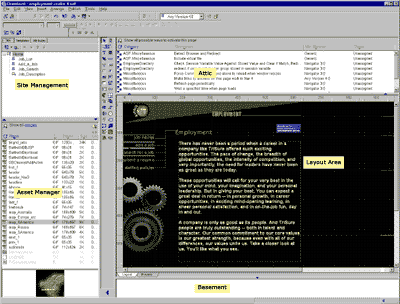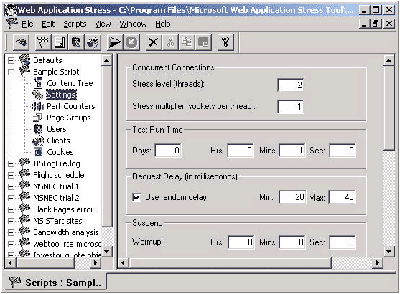Third and final
If you have been following our story on setting up a simple e-commerce site over the last two months, and judging but the emails, many of you have. We now come to the final part. Your e-commerce site should be up and running in test mode, now comes that moment of truth when you make it live. All that is required is to is to switch from test mode to production mode in Actinic Catalog and to inform the nice people at Netbanx that you wish to make the system live. Any test purchases that you try will now deduct real money from a real credit card account, however these test transactions can be credited out by contacting Netbanx with the transaction number. A small 'gotcha' is that Barclay Merchant services will charge you £1 to process a refund, so watch out!

Order Processing - very important - often forgotten
Often when talking to clients about on-line shopping sites, the thought processes end with the user placing the order. What the company does with that order, how they know there is an order and can they handle the response? These are all question that should be asked. The solution offered for web commerce should handle this important area, it is one of the reasons that we chose Actinic's Catalog for this series of articles. So perhaps it's time to explain here what happens when an order is placed. After the user has entered their address details, they are taken to the secure Netbanx site where they are asked for their credit card details. If these pass validation with the credit card company, an order details confirmation screen is displayed for printing and an email confirming the order is sent to the user. A second email is sent to a pre-designated address, which has been set up in Actinic catalog informing the recipient that an order has been received on the web site. This recipient then needs to download the new orders using the 'retrieve orders' option in Catalog. This downloads all the new orders and displays them in a window, where there are options for viewing and amending the order details, Printing the Picking lists and Invoices and to delete an order. Actinic Catalog does not need to be running all the time and in fact just a version just to deal with the order processing site can be installed on a users machine. Safe in the knowledge that they will not be able to alter the design of the site or the stock details.
That is all there is to it, the final solution is hardly an Amazon.com but it gives a very comprehensive solution with the minimum fuss and cost.
The sound of drums

Drumbeat - a very viable development enviroment
Many of you find it difficult to get started with ASP and databases and there is a market for a design tool that really helps you to write the code and produce .asp files. There is such a product, which is little known about, but we are sure that we shall be hearing a lot more about it before long. Such is the potential of this product, that Macromedia, the company who produce Dreamweaver, Shockwave and Flash, have bought the company and are launching three versions including an e-commerce version with a shopping basket object. The product is called Drumbeat (www.drumbeat.com).
The design environment allows drag and drop of elements and creates pages for different browsers using DHTML or tables for positioning. There is so much in this product that we have only had chance to scrape the surface of its facilities and no time to test it fully but without a doubt it is well worth the 60M download for the trial version. It is not a product that the novice could use as you still have to know what you are doing but it does remove the drudgery of code writing. The design process is the usual, create the page and then publish this to the web server. You have to publish before you can preview and so you must have a development web server setup that is not public, but there again you would anyway wouldn't you?
There are smart elements, interactions, a script center and a whole host of things that are there to make your life easier and so you don't have to write any code. Macromedia are holding some training sessions on this product and so it will be interesting to see the how the design and the all important debugging processes are done under this environment. More later as they say.
'Roll your own'
Mark is currently developing an on-line scoring system for sports events. The system has performed well at three events so far and the development continues. One of the problems, was to generate the results pages for the web. The information was held in a database so easy enough you may think. Well doing it via asp from the live database was not ideal in this case, as the database was constantly being updated with new results. This data would then be re-scored which would affect the current results, so any query would return incorrect scores. The solution to this was to generate static web pages from the database after the scoring was done. This had the added benefit that that load on the web server was reduced and the pages could be hosted on any web server without the need for Active server Pages being installed. So the first attempt was to use Microsoft's Access to generate the pages in the form of tables. This was a disaster, as each row was defined as a separtate table and so none of the columns lined up, and the scores meandered down the web page like some drunk snake, the pages also were huge because of the amount of unnecessary HTML code that was generated. So a re-think was required, part of the system was already using a Visual Basic component called VSReports ( http://www.videosoft.com) which is excellent at generating printed reports from access tables and according to the help file and the properties, it will output to HTML as well as a printer. This however proved not to be the case and after emails to Videosoft who make this control, it appears that not only does it not generate HTML, but there are no plans to do this in the future. Oh, well back to the drawing board. What was required was a way of generating web pages with hypertext links to each other that not only looked good, but did not contain unnecessary HTML to keep the file sizes down. In the end after much searching, the way chosen was to write a program in VB to generate these web pages, after all, web pages are just text files. The solution works well and on a Pentium 120 it can generate 12,400 pages with all the hypertext links in just under 3 mins. In these days of dynamic this and database that, it is always worth keeping an open mind for other ways to solve a problem.
'DUH ! '

The only useful work Homer has ever done
For those of you who are watchers of the American cartoon series 'The Simpsons' it may come as a surprise that Microsoft have released a tool for stress testing web sites called 'Homer'. Although thinking about it, as both are good at breaking things, perhaps the naming choice is a little more obvious. So what does this product do? Well it's designed to stress test web servers by simulating multiple browser requests. This is done by creating scripts either manually, by recording browser activity, by pointing to an IIS log file, selecting files in your content directory, or importing an existing script. After creating a test script, this is then run on any number of client machines, all controlled from one centralized master client. There is a C++ Web Application Stress client and an Active Server Page version so that you can control the test remotely. Homer runs as an NT service and there is an option to limit the simulated bandwidth to emulated modem users, this will slow throughput of course but increase the number of concurrent users that are run. There are masses of advanced functions and all the results are stored in the ubiquitous Access .mdb so that if the reports are not to your liking then you can design your own. If this sort of thing is 'your bag' then take a look at http://homer.rte.microsoft.com/